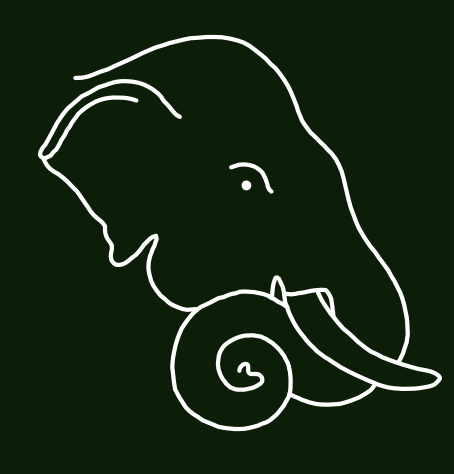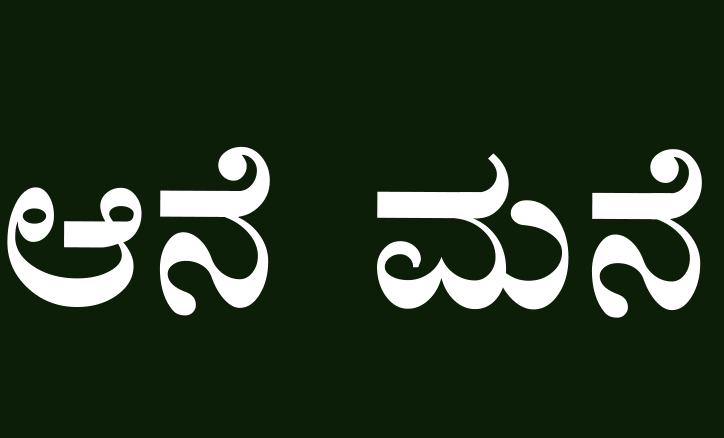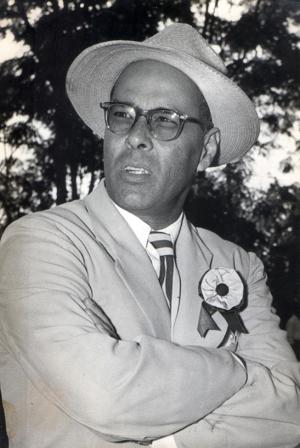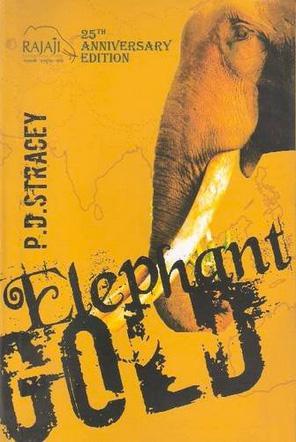


Patrick Donald Stracey (1906-1977) Author of 'Elephant Gold'

A tribute by his youngest brother, Eric Stracey
My brother Patrick should have been named Peter, for he was a rock in every sense of the word. He was the second of eleven children, two years younger than my sister Doreen and was born on 30 January 1906 in the East Coast town of Cocanada (now Kakinada), then in the Madras Presidency where my father was a forest officer. He was fourteen when I, the last of our large family of eleven children arrived in 1920, so he was already a young man when I first began to take note of him. My earliest impression was of a sturdy figure of medium height, a swarthy complexion, and a serious face made even more stern by the moustache he cultivated while still at school. But his outwardly forbidding appearance covered great strength of character and will, and was belied by his friendly and gregarious nature, his easy laughter, his bigness of heart, his enormous interest in everything around him and his capacity to live life to the full. Two of my earliest memories of him are playing the piano and singing "Cherry Lips Sweeter than Sugar or Plum" for me, and of his going to parade dressed in his Auxiliary Force uniform of khaki shorts, tunic with brass buttons, Wolseley pattern helmet, and ammunition boots and puttees.

He started school at Cocanada, but was soon sent as a boarder to St Joseph's European High School, Bangalore (the "European" has since, properly, been substituted by "Boys") which he entered at the age of nine. He seems to have taken early to games and done well enough to be selected at once for a junior team, for I have a school group-photo in which he is seen sitting on the ground, alone in the centre, holding a football marked 1915. It was a token of things to come, for, though he was not as brilliant a student as his brother Ralph, he was an outstanding athlete and sportsman. He had quick reflexes and a natural eye for a ball, which enabled him to excel at all games: cricket, hockey, soccer, and later, tennis and golf. His only regret was never having learnt to swim. I was not old enough to remember seeing him win his track and field events at school, but I do recall his hoard of cups and medals that once filled a cupboard in our drawing-room. He made the unfortunate mistake of taking them with him when he went to Madras, where he entrusted them to a false friend who misappropriated them. So all I now have to remind me of his prowess are a few photos, in one of which he appears, his chest full of medals, seated among the prize-winners at his last school Sports Day. I also have a small cup he was awarded when his team, St Joseph's Club, for which he always played goalie, where he had to face many a ball coming hard at him, that foreshadowed the role he was to play for most of his life. For he was destined to be confronted by more than his fair share of the slings of an unkind fortune after he became head of the family when our father died in 1932.
His early career as a scholar was unremarkable except for the spectacular manner of his departure. In his very last year of school, he and his best friend and classmate, Nobby Jones, hatched a plot to raid the Good Shepherd convent opposite while the girls were at evening study. Donning home-made paper masks, for he was a day-scholar by then, they scaled the convent wall (since crowned with shards of glass) and made their way to the girls' study. They burst a few crackers as they entered, and in the ensuing pandemonium, a nun lost her veil and Nobby his mask! It took only this for both culprits to stand revealed, and not the most earnest pleading of my mother for the two to be allowed to sit for their final examinations, due shortly, could persuade the Principal not to expel them. Only Pat's Roman Catholic faith, which gained him entry to St Aloysius' School at Mangalore, enabled him to complete his final year. There he passed his High School examination (obtaining a third class, he told me later), with just sufficient marks to matriculate. He was allowed back to St Joseph's College to do his Intermediate, winning more cups and medals on the way, after which he went on to Presidency College, Madras, to do his Honours in Geology. He chose Botany and Zoology as subsidiary subjects in order to fulfil his ambition to enter the Indian Forest Service. It was an imperial grade to which our father, who had started at the lowest rank in the department, had been barred by age for promotion.
He was a normal and healthy young man who could fall naturally in love with a pretty girl, of whom there were (and still remain) many in Bangalore. One of them was Dolly Walker, daughter of an old school friend of my mother, who was under training as a nurse when he was doing his Intermediate. He made it part of his athletic training to run every evening to the nurses' hostel at the Curzon Hospital to visit her, but as with his other loves at that time, nothing came of his wooing. Before going on to Presidency College, he was wrongly diagnosed as having a heart condition, and so dropped out from all games and athletics. It was a situation that he must have found hard to take, for sport was his very life-blood. He contended himself with the next best thing, refereeing games, managing his college teams and coaching his younger colleagues.
He returned to Bangalore after passing his Honours in 1927 and at once settled down to study for the IFS competitive examination, in which he would have to obtain a very high rank to be selected, for there were only four vacancies in the entire country to be filled that year. He studied long hours, sometimes in the garden at night under a bulb strung from the house in order to attract the insects that he added to his entomological collection, He also took long, vigorous walks each day, both to overcome his 'heart condition' and to train for the compulsory, timed ten-mile walk that he would have to undergo as part of the medical test if he qualified. Of the four vacancies available, three were to be filled on merit based on rank in the competitive examination, and one was reserved for a person belonging to a minority community. Pat ranked fifth overall and the highest among the minority candidates. He thus automatically qualified for the fourth vacancy, but was appointed to it only after Colonel Sir Henry Gidney, the then Anglo-Indian leader, foiled an attempt to give it to a lower-ranking member of the Muslim community on whose political support the government usually relied.
He was allotted to the Assam cadre of the service, a posting that at first disappointed him, for he had wanted to serve in Madras, his father's old province and nearer the family, but it was to prove to be to his ultimate benefit. He trained for two years at the Forest College, Dehra Dun, a place that was to have more than one association for the family, for our father had trained at the Rangers College there in 1898 after being promoted from Forester to Deputy Ranger, and our brother Cyril was to go as a Gentleman Cadet to the newly opened Indian Military Academy there in 1935. And almost twenty five years later, Pat himself returned to the Forest Research Institute when his services were lent to the Government of India as Director of Forest Education.
Throughout his years in Assam he looked after his widowed mother and two younger brothers, foregoing his chance of a happy marriage to a pretty, educated and vivacious girl, Phyllis Dunning, who would have made him an ideal wife and helpmeet. His more notable achievements during the early years of his service were the revival, with E P Gee, a great name in wildlife conservation, of the Rhinoceros Sanctuary at Kaziranga, and the capture of a record number of wild elephants during a wide-ranging khedda in the Nagaland Foothills in the winter of 1936, part of which I happened to witness while on holiday with him.
He next spent five years on deputation to the Government of India as Director of Forest Education at the Forest Research Institute, Dehra Dun, in charge of the training of numerous young officers both there and at the Southern Forest Training College, Coimbatore, which by then formed part of the Indian forest training establishment. His greatest pleasure was taking his trainees on numerous field-visits all over the country, including the districts he knew as a child with our parents. While at Dehra Dun he took the opportunity to present to the College the medals our father had won for Natural Science and Forest Engineering while under training there, and wrote a touching tribute to him in the college magazine titled A Forester Father by a Forester Son. He also founded the Wildlife Society of India, becoming its first President. A portrait of him, typically with his dog playing by his side, today hangs in the Society's premises in Dehra Dun. Years later his trainees still remember him for his strict discipline combined with his friendly approachability, his deep knowledge and great enthusiasm for the profession of forestry, and for the innovations he introduced in the curriculum, notably a course in Wildlife Preservation for which he wrote a manual that is still in official use.
Pat deferred marrying until after he had seen our brother Cyril through the expensive two and a half year course at the Military Academy. His first wife, Ruth Beatty, was a music mistress whom he married in 1938. The marriage was short-lived for Ruth soon left for England to be with her parents, who had emigrated earlier, for the birth of her baby. It was a girl whom she named Pamela, but three years after she was born they made the fatal mistake of returning prematurely by sea during the height of the war, when the threat of German submarines had not yet been overcome, They touched at Rio de Janeiro where Ruth posted Pat a photo of the little girl standing on deck carrying her doll. It was to be his last glimpse of her, for the ship was torpedoed off South Africa and both mother and daughter were drowned. Pat never ceased to blame himself for allowing them to risk the voyage, and was drawn thereafter to every little girl he happened to meet, seeing in her the only daughter he had ever had, and lost.
His second wife was a war-widow, a Mrs Lever, whom he met in Bangalore when she was searching for news of her husband, then still reported missing in action in Malaya. He was an army doctor in the Indian Medical Department and it turned out that he had been killed in battle. Their marriage, from which there were no children was unhappy and ended in divorce. While at Dhera Dun, Pat married once again, this time to a Peace Mammen, daughter of a Syrian Christian padre from the West Coast. Again there were no children, much to his regret, for he had a strong sense of family and much pride in the Stracey name which he would have wanted to see continue in his line. It was also a great loss to the future generally, for Pat's qualities were of the very finest and deserved to be passed on.
After five years in Dehra Dun he took leave to visit Rome for the Olympics, thus fulfilling a lifelong dream, and to tour the Continent. On return, he was posted to Shillong as Chief Conservator of Forests, Assam, a position our father would have been very proud to seem him attain, as indeed were his mother and the rest of us. Apart from his work in the field of forestry and wildlife conservation, he is remembered in Assam for having planned and initiated the building of a sports stadium at Jorhat, one of the province's regional headquarters. After retiring he remained at Shillong where, since he never had much money, he took a job as Secretary of the Shillong Club. But it was not long before he moved to Kohima on appointment as the first Director of Forestry of the newly-formed state of Nagaland. It was during this period that, besides contributing numerous articles to professional journals dealing with forests and wildlife, he commenced writing the series of books he had long planned Elephant Gold; Reade, Elephant Hunter; Nagaland Nightmare; the authoritative Tigers, one of the World of Animal series; and an unfinished Himalayan Odyssey.
On retiring from government service he joined the Indian Council of Applied Economic Research, New Delhi, as its Forestry Consultant. One of his endeavours was to interest the Government of Bhutan in a scheme for floating wood-chips down from their alpine sites via polythene pipes to wood-pulping facilities below, instead of transporting whole logs in trucks. It was a process that would have been cheaper and less damaging to the state's mountain roads and would have maintained supply for nine months in the year instead of three. Unfortunately, the scheme was not acted on. His forceful and knowledgeable address to an international conference at New Delhi on the preservation of wildlife so impressed the Ethiopian representative that he was then and there invited to that country to organise its efforts in the field. He accepted the offer and spent four years there planning and directing the conservation of its endangered species. The terrain was rough and the roads primitive, and it was while on tour of inspection on one of them that his car skidded and overturned, an accident from which fortunately emerged shocked and only partially bruised.
He returned to India just before the political upheaval in Ethiopia saw the deposition of the Emperor by a military dictatorship. He settled down in his home-town of Bangalore, not to idle retirement but to continue with his writing and to help his brother Ralph, then in failing health, to run the Stracey Memorial School that the latter had founded in honour of his parents. When told that he had cancer of the pancreas, instead of resigning himself to its rapid advance, he vowed in typical manner that he would beat it by will-power. He packed his bags and took off for the jungles of Madhya Pradesh (the erstwhile Central Provinces) to study the symbiosis of tribal communities and wildlife. But nature proved too much for his great spirit, and he soon had to return to Bangalore, where he died at seventy one, all too young for a man of his nature. Peace outlived him by eleven years, dying in 1988, two weeks before Cyril.
Encomiums poured in after his death. An old school-friend, Martin Pereira, described him as a man of sterling character whom everybody looked up to. An Indian diplomat who knew him in Ethiopia wrote, "He was a close friend of ours, a man whom I respected and loved much. I admired his intellect, his unrelenting courage, his rocklike honesty. He was a maker and doer of things a ball of fire till the very end". Another friend wrote, "He was a person who attracted attention as soon as he started speaking; confident, knowledgeable and one who spoke with authority, and sometimes with acerbity. He would pick up a puppy on the road or fight with tonga or rehri-wallas if they overloaded their vehicles. Once on a trip to a bird sanctuary he saw a bhaluwallah (bear-keeper) dancing the animal on the road. He turned the car back and gave the man ten rupees and told him to give the bear a proper feed." His best friend and lifelong colleague, Ramabhadran, described him as having a heart of gold, but liable to react like a wounded buffalo when crossed. And as a posthumous and well-deserved honour which he would have accepted as the best and final appreciation of his services, the Board of Trustees of the World Wildlife Fund included him along with nine other conservationists in its Roll of Honour. I, who benefited much from his self-sacrifice, will always cherish the memory of his strength of character, his kindness of heart, his vivid and dynamic personality, his loyalty to the family, his ready praise, his lively conversation and his unbounded enthusiasm for life.
by Eric Stracey
© Copyright 2008-2025 Aane Mane Foundation.
All rights reserved. Web design by Lor.